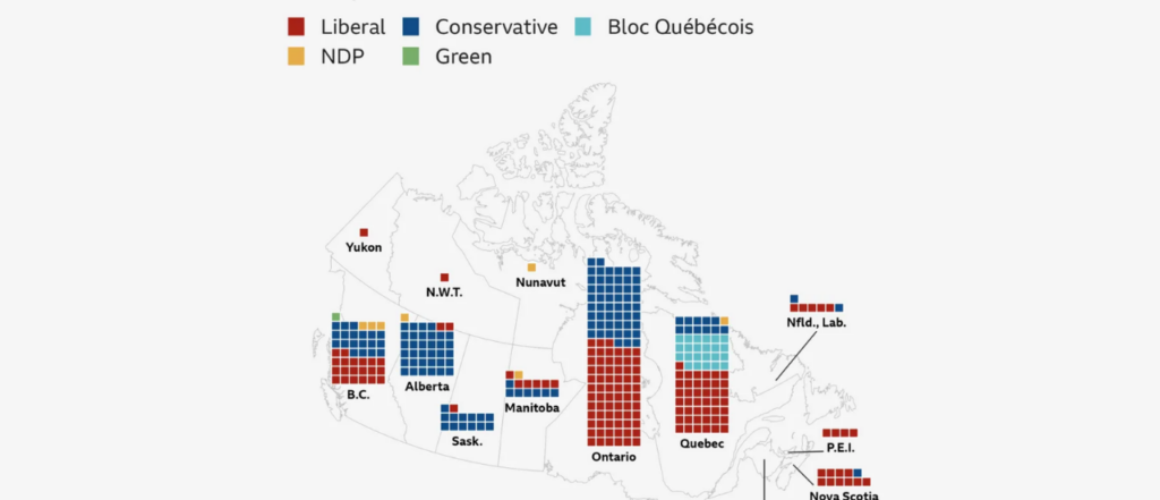Breaking Down the 2025 Election: The Unexpected Role of Environmental Policy in Canada’s Political Shift
The 2025 Canadian federal election revealed an increasingly dominant factor in the country’s political landscape: environmental policy. Historically, environmental issues were often viewed as niche concerns, primarily supported by smaller progressive parties such as the Green Party and the NDP. However, in 2025, environmental policy took center stage in mainstream political discourse, influencing not only how Canadians voted but also how political parties shaped their platforms and strategies.
With the world facing an escalating climate crisis, the role of environmental issues in national elections has never been more pronounced. From extreme weather events to rising sea levels and environmental degradation, Canadians are experiencing the immediate effects of climate change. In response, environmental policy became one of the key battlegrounds of the 2025 election, with major political parties scrambling to formulate policies that would address the challenges posed by climate change, even if these policies conflicted with other traditional priorities.
While the 2025 election demonstrated how deeply concerned Canadians are about environmental issues, it also underscored a complex paradox. Canadians are increasingly demanding action on climate change, but they are also concerned about the economic consequences of green policies. The political parties that succeeded in the election were those that successfully balanced these competing priorities—environmental sustainability and economic stability.
The Rising Influence of the Environment on Voter Behavior
In the years leading up to the 2025 election, there had been a growing recognition of the need for a strong and proactive environmental agenda. Wildfires, floods, and severe storms have become increasingly frequent and destructive, particularly in the western provinces. As the impacts of climate change were felt more acutely across the country, Canadian voters began to prioritize climate action over traditional party issues such as tax cuts or social welfare.
In the election, voters across all age demographics, especially younger Canadians, expressed frustration with the slow pace of progress on climate change. The youth vote, in particular, was motivated by candidates’ promises to tackle carbon emissions, transition to renewable energy, and invest in green technologies. The political party that could most convincingly address climate issues saw an increase in voter engagement, particularly among first-time voters, who were disproportionately concerned with the environment and its long-term implications.
The increased importance of environmental issues was most evident in key battleground ridings that had previously been characterized by a more conservative, economically-focused electorate. In suburban areas, where economic anxiety over housing costs and job security had historically dominated voter concerns, environmental issues gained traction in 2025 as part of a broader conversation about sustainability and long-term prosperity.
Environmental Policy: The Liberal and NDP Push for Green Agenda
In the 2025 election, the Liberal Party and the NDP aggressively pushed their green agendas. The Liberals’ environmental platform was centered on ambitious goals for reducing carbon emissions by 50% by 2030 and achieving net-zero emissions by 2050. Their plan included investments in renewable energy, electric vehicle infrastructure, and carbon pricing mechanisms designed to incentivize corporate responsibility.
The NDP, meanwhile, championed a more radical environmental agenda, advocating for immediate action to phase out fossil fuels and significantly increase investments in green infrastructure. Their platform also included a strong emphasis on climate justice, which addressed the social and economic inequalities exacerbated by climate change, such as the impact on marginalized communities and Indigenous peoples.
Both parties garnered significant support from younger, environmentally-conscious voters who were increasingly disillusioned with previous government inaction on climate change. While the Liberals’ green initiatives were seen as a step in the right direction, it was the NDP’s more aggressive approach to combating climate change that resonated most with voters who felt that urgent action was necessary.
However, the conversation about climate change also revealed a divide between urban and rural voters, with the former generally supporting more progressive policies and the latter voicing concerns about the economic impact of aggressive environmental measures. Many rural communities and industries that rely heavily on natural resources—such as oil, gas, and forestry—feared job losses and economic hardship if green policies were implemented too quickly.
The Conservative Response: Economic Growth and Environmental Responsibility
The Conservative Party, under leader Pierre Poilievre, faced a difficult balancing act in 2025. While the party traditionally advocated for lower taxes, economic growth, and deregulation, it found itself grappling with the growing public demand for climate action. Poilievre’s strategy was to present the environment and the economy as interconnected, with policies that aimed to create jobs while addressing climate change in a way that would not disrupt the Canadian economy.
In contrast to the more radical climate policies proposed by the Liberals and NDP, the Conservative Party presented a more pragmatic approach. Their platform emphasized innovation in green technology and carbon capture, with the goal of transitioning to a low-carbon economy without sacrificing economic growth. Poilievre focused on creating green jobs in the energy sector, particularly in the development of clean technologies like hydrogen and wind power, while ensuring that Canada’s resource industries remained competitive on the global stage.
While this approach resonated with many voters concerned about the economic implications of climate policy, it also faced significant criticism from environmental activists, who argued that the Conservative plan did not go far enough to address the urgency of the climate crisis. Many environmental groups expressed frustration that the Conservative platform did not include a clear commitment to phasing out fossil fuels or reducing carbon emissions at the scale required to meet Canada’s climate goals.
The Green Party: A Force for Environmental Advocacy
While the Green Party did not win a significant number of seats in the 2025 election, their influence on the national conversation about climate change was undeniable. Leader Elizabeth May’s campaign focused exclusively on environmental issues, calling for aggressive action to combat climate change through bold policies that included the nationalization of Canada’s energy sector, a carbon tax increase, and a commitment to achieving net-zero emissions by 2035.
The Green Party’s role in the election was somewhat symbolic—serving as the conscience of the environmental movement. While they did not have the electoral support to challenge the major parties, their uncompromising stance on climate change influenced the policies of other parties. The Green Party’s push for immediate, sweeping climate action contributed to the overall environmental discourse of the 2025 election, forcing both the Liberals and Conservatives to address climate change more seriously in their platforms.
A New Era of Environmental Policy in Canada
The 2025 election signaled the beginning of a new era in Canadian politics—one in which environmental policy will play a crucial role in shaping not only electoral outcomes but the future of the country’s economic and social policies. Voters are demanding climate action, but they are also looking for solutions that do not come at the expense of their livelihoods. Political parties will need to develop pragmatic, innovative solutions that strike a balance between environmental sustainability and economic growth.
Looking forward, the Canadian government will need to navigate the complex terrain of environmental policy, balancing the urgent need to address climate change with the economic realities of an evolving global market. The 2025 election has set the stage for a more sustainable, green future in Canada—but the path ahead remains fraught with challenges, and it will require strong leadership, collaboration, and innovation to successfully transition to a low-carbon economy.


